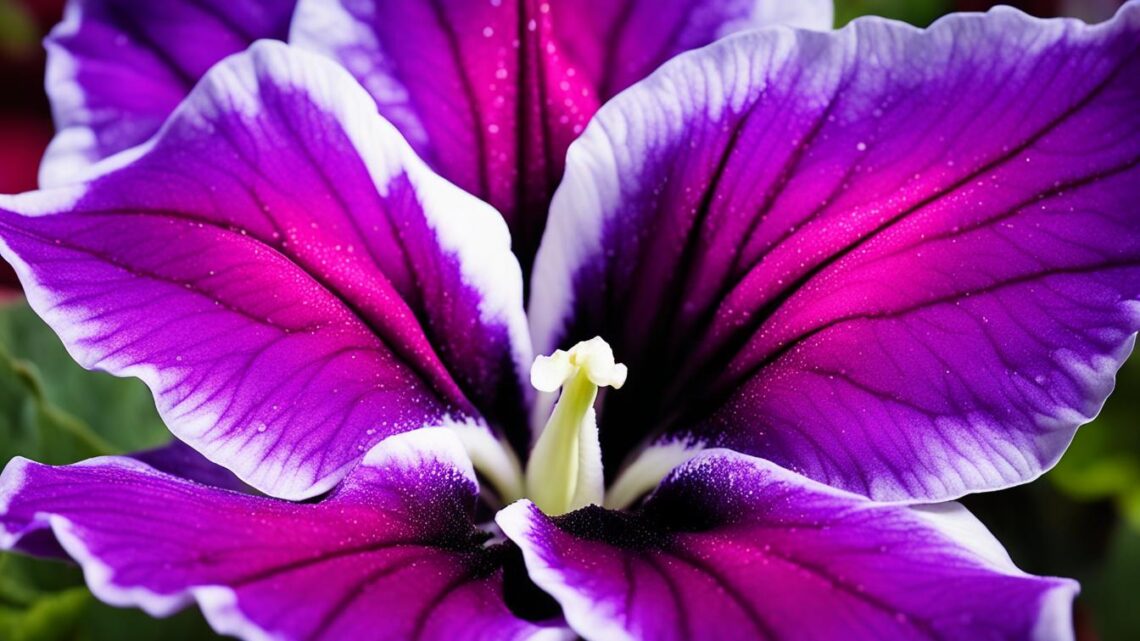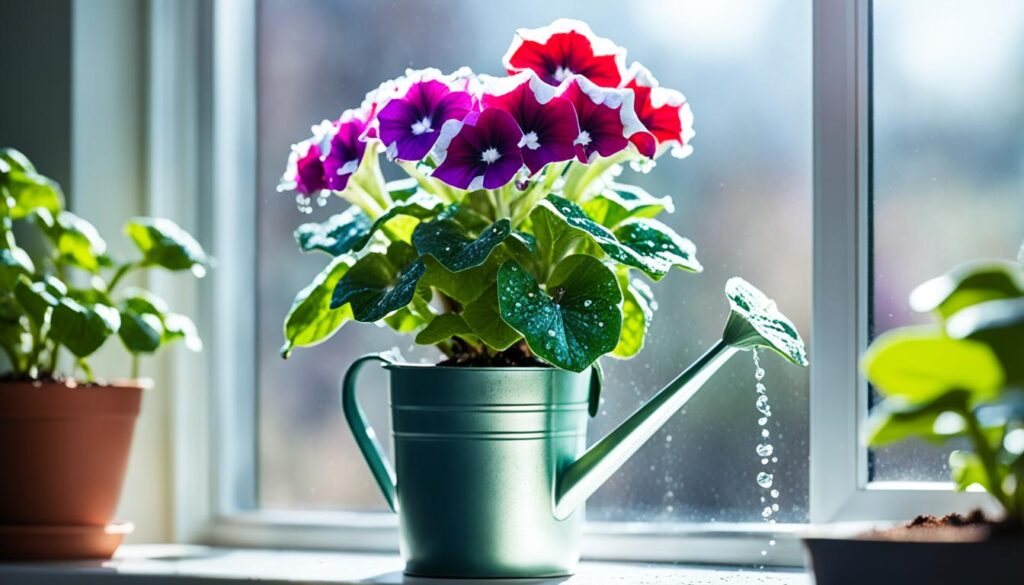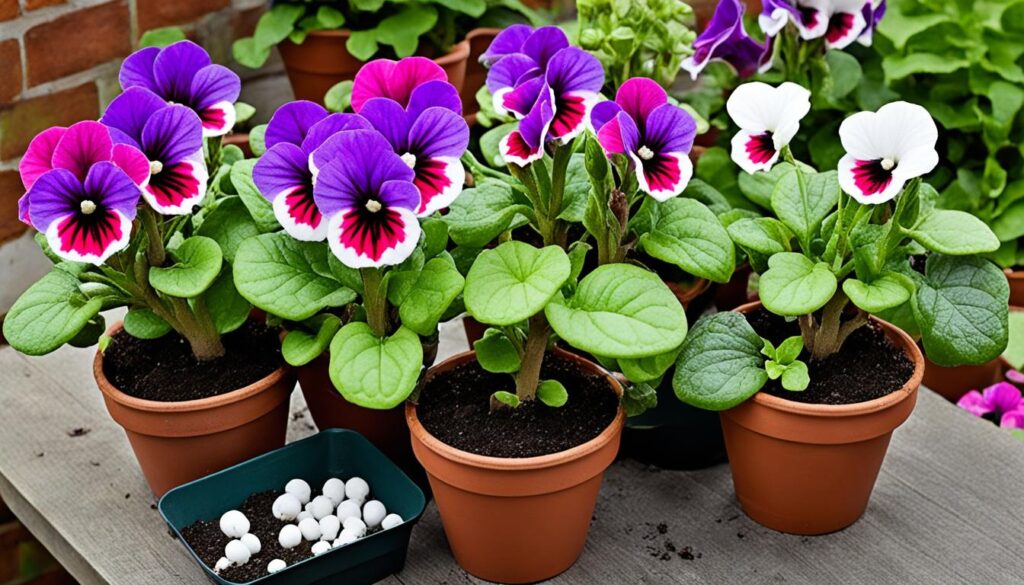
Welcome to the world of Gloxinia, a stunning plant that adds elegance to your home. These plants have beautiful flowers and lush leaves. They can make your home bright and happy. To keep them thriving, you need to know how to care for them.
By giving them the right conditions, you’ll get to see their stunning flowers. This will turn your home into a beautiful garden indoors.
Understanding Gloxinia: An Overview
Gloxinia is a beautiful plant that fits well in indoor gardens. It comes from the tropical areas of Central and South America. This shows how lush and vibrant its home is.
Origin and Characteristics of Gloxinia
The Gloxinia has soft leaves and beautiful bell-shaped flowers in colors like purple, red, pink, and white. It grows to a small size, perfect for small spaces. Its leaves and flowers make a great centerpiece for indoor gardens.
Why Choose Gloxinia for Indoor Gardening?
Choosing Gloxinia for indoor gardening has many perks. It’s small, so it fits in many places and looks great all year. It’s easy to care for, making it perfect for new gardeners. For more tips on caring for indoor plants, check out indoor gardening care tips.
Gloxinia Plant Care Essentials

Understanding your Gloxinia’s needs is key to its health and beauty. Knowing how to water and light your plant is crucial. With the right care, you can enjoy blooms all year.
Watering Requirements for Healthy Growth
Watering your Gloxinia right is vital. Water when the top inch of soil is dry. Avoid overwatering to prevent root rot, a common issue.
Use room temperature water and make sure it drains well. In the growing season, water more often. But, cut back during the dormant phase to avoid waterlogging.
Optimal Light Conditions for Gloxinia
Gloxinia loves bright, indirect light for vibrant blooms. Place it near east-facing windows for gentle morning sun. This promotes healthy growth.
Use grow lights 12 inches above your Gloxinia to avoid heat. Your plant needs consistent light for at least nine hours a day. This encourages blooming.
Watch for signs like leggy growth or dull leaves. This might mean your plant needs more light. Adjust the light to keep your Gloxinia looking great.
Gloxinia Soil Requirements for Healthy Blooms

To get bright flowers, it’s key to know what soil Gloxinia needs. Picking the best potting mix is crucial for its health and flowers. The right mix makes sure Gloxinia grows well, focusing on soil that drains well.
Choosing the Right Potting Mix
Choosing a top-notch potting mix is key for your Gloxinia. A mix made for African violets works great, keeping moisture in but not too much. The soil’s pH should be between 5.5 and 6.5 for best growth and flowers.
Adding perlite helps with drainage, stopping water from pooling. This is bad for Gloxinia plants. Using a special fertilizer at half strength helps flowers grow strong.
Importance of Drainage
Good drainage is crucial for Gloxinia. Too much water can cause root rot and infections. This harms the plant’s health and flower production.
Keep an eye on the soil’s moisture. Too much water is bad. Cutting off dead flowers and leaves helps air get in and encourages new growth. Keep your Gloxinia warm, over 70°F, and the soil just moist.
| Soil Component | Function | Recommended Proportion |
|---|---|---|
| Peat Moss | Moisture retention | 40% |
| Perlite | Improves drainage | 30% |
| Compost | Nutrient provision | 30% |
For great Gloxinia care, watch the soil’s moisture and repot during the off-season. Doing this will lead to beautiful blooms all season.
For more on caring for other plants, see this guide for cacti care.
How to Grow Gloxinia from Bulbs

Growing Gloxinia from bulbs can make your indoor space bright with beautiful flowers. To do well, focus on planting and timing. This ensures your Gloxinia bulbs grow and bloom seasonally.
Planting Gloxinia Bulbs: Best Practices
Start with healthy, firm Gloxinia bulbs for the best chance of success. Put them in a pot with soil that drains well. Make sure the bulb’s top is a bit above the soil to help it grow well.
Water the bulbs a little right after planting. Make sure the soil stays moist but don’t let it get too wet. This prevents root rot, which can ruin your plants.
Timing Your Planting for Seasonal Blooms
Planting at the right time is crucial for beautiful flowers. Spring is the best season, when the soil is warm and there’s no frost. This matches Gloxinia’s natural growth cycle, leading to lovely blooms in summer.
Once the bulbs start to grow, give them bright, indirect light. This is like the gentle morning sun they love. Place them near east-facing windows for the best growth.
Learning how to grow Gloxinia bulbs improves your gardening skills. It also fills your home with beautiful plants and flowers. For more ideas, check out shade-loving perennials that go well with Gloxinia.
Gloxinia Propagation Techniques
Learning how to grow Gloxinia plants lets you enjoy their beauty more. You can grow them from leaf cuttings or seeds. Each way has its own benefits, so choose what fits your gardening style and time.
Leaf Cuttings as a Propagation Method
Using leaf cuttings is a simple and sure way to grow Gloxinia. Pick healthy leaves without pests or diseases. Put them in damp soil to start roots and new plants.
Keep cuttings in a warm spot, between 65 to 75 degrees Fahrenheit. This method helps you grow many new plants and connects you to gardening.
Using Seeds to Grow New Gloxinia Plants
Using seeds is another way to grow Gloxinia. It takes longer but can give you many different types of flowers. Start by planting seeds in good soil, in bright, indirect light, and keep it moist.
Watch the watering to avoid dry or wet soil. Doing this right makes growing Gloxinia seeds rewarding and adds to your indoor garden. For more tips on caring for Gloxinia, check out this resource.



